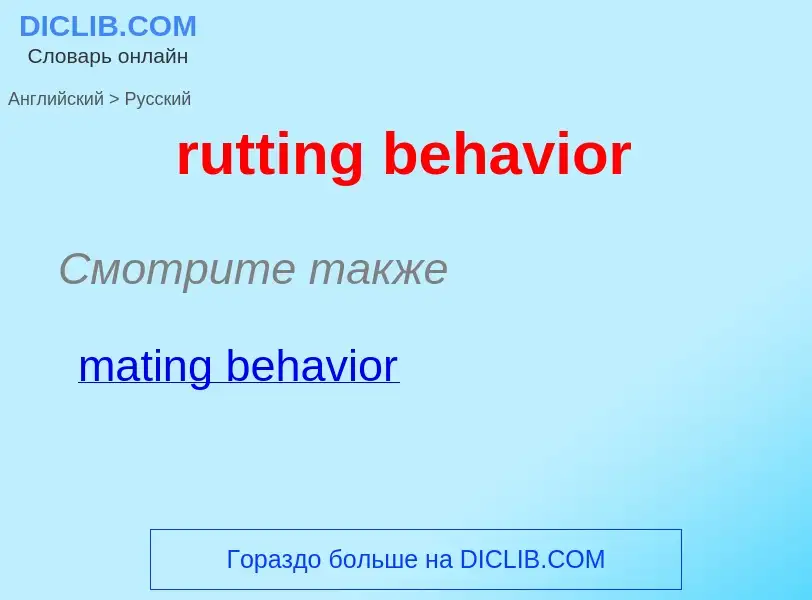Translation and analysis of words by ChatGPT artificial intelligence
On this page you can get a detailed analysis of a word or phrase, produced by the best artificial intelligence technology to date:
- how the word is used
- frequency of use
- it is used more often in oral or written speech
- word translation options
- usage examples (several phrases with translation)
- etymology
rutting behavior - translation to English
Смотрите также
Definition
Wikipedia

The rut (from the Latin rugire, meaning "to roar") is the mating season of certain mammals, which includes ruminants such as deer, sheep, camels, goats, pronghorns, bison, giraffes and antelopes, and extends to others such as skunks and elephants. The rut is characterized in males by an increase in testosterone, exaggerated sexual dimorphisms, increased aggression, and increased interest in females. The males of the species may mark themselves with mud, undergo physiological changes or perform characteristic displays in order to make themselves more visually appealing to the females. Males also use olfaction to entice females to mate using secretions from glands and soaking in their own urine.
During the rut (known as the rutting period and in domestic sheep management as tupping), males often rub their antlers or horns on trees or shrubs, fight with each other, wallow in mud or dust, self-anoint and herd estrus females together. These displays make the male conspicuous and aids in mate selection.
The rut in many species is triggered by shorter day lengths. For different species, the timing of the rut depends on the length of the gestation period (pregnancy), usually occurring so the young are born in the spring. This is shortly after new green growth has appeared thereby providing food for the females, allowing them to provide milk for the young, and when the temperatures are warm enough to reduce the risk of young becoming hypothermic.


![White-tailed bucks in late rut in the [[Great Smoky Mountains]] White-tailed bucks in late rut in the [[Great Smoky Mountains]]](https://commons.wikimedia.org/wiki/Special:FilePath/Cades-cove-deer-fighting-tn1.jpg?width=200)
